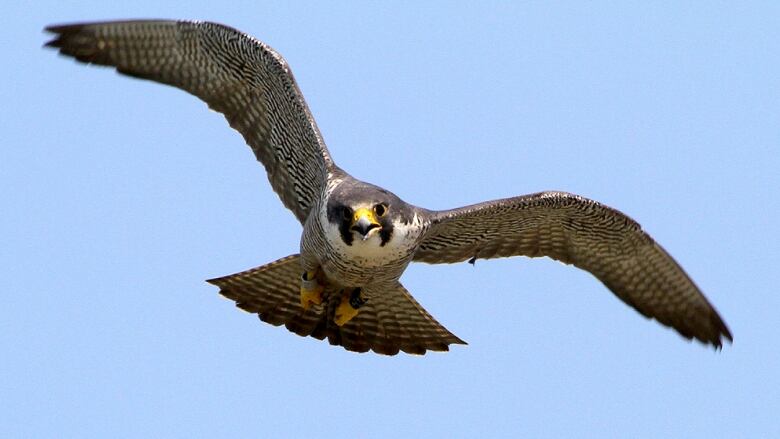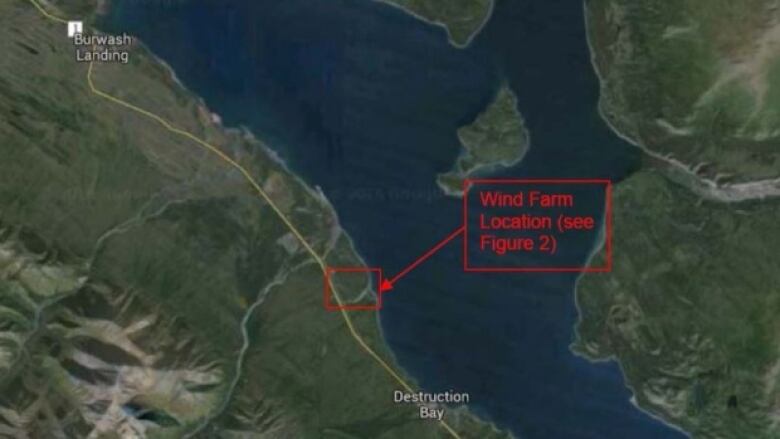YESAB recommends Kluane wind project approval, despite concerns
White River First Nation concerned about 50-metre turbines in 'crucial bird migration corridor`

The YukonSocio-EconomicAssessment Board is recommending awind-turbine project proposed nearKluane Lake be approved, despite some"significant"concerns about killing birds.
YESABtook 71 days to review the Kluane N'Tsi (wind) Energy Project and recommend approval with conditions.
The decision bodies for the project are the territorial government and Nav Canada, the owner of Canada's civil air navigation system.
The Kluane First Nation is proposing to build three wind turbines with a combined capacity of 285 kW.
The installation would provide power to Burwash Landing and Destruction Bay.
YESAB's decision paper notes the turbines would prevent the use ofabout 160,000 litres of diesel per year which is nearly a third of the diesel used to generate power in those communities.
The turbines would be installed between the Alaska Highway and Kluane Lake. They would be visible from the Alaska Highway five kilometres away from Destruction Bay and 10 kilometres away from Burwash Landing.

Blades in migration corridor says Canadian Wildlife Service
YESAB's assessment does acknowledgethe potential for'significant' loss of local birds. However it believes this can be mitigated.
A submission from the Canadian Wildlife Service says the turbines' location is important.
The federal department's submission says the proposed site is "adjacent to wetland/lagoon habitat that appears to be attracting and concentrating birds." It notes the area called the Shakwak Migration Routeis "a major migration corridor for migratory birds." This includes golden eagles which are a species of concern.
Several species-at-risk also frequent the site near Kluane Lake. These include the olive-sided flycatcher, horned grebe, red-necked phalarope, rusty blackbird and peregrine falcon.
The White River First Nation also voiced concern the "project may lead to significant number of bird and bat strikes," citing a concern for brown bats.
Yukon wildlife biologist Dave Mossop was involved in the research. He has said the proposed location was moved back from the lakeside citing concernsand has said the total impact on wildlife would likely be negligible.
Guy wires, not blades, are the main concern
The Kluane First Nation has committed to making guy wires visible, "whether with brightly coloured paint or flagging
tape to reduce the number of collisions."
YESAB notes that "such measures appear to be effective, at least in part, in reducing bird mortality."

Another request from the Canadian Wildlife Service is to reduce the turbines' illumination and safety lights.
The department says bright lights attract birds to the structuresand requests that lightsbe used "only as required for safety by Transport Canada."
The site already has a meteorological tower installed. YESAB notes the tower's guy wires have already snagged a few birds.
"Guy wires can be a greater cause of bird mortality than the turbines themselves," notes the review board.
KluaneFirst Nation would be the owner
No one from the Kluane First Nation was available for comment.
The First Nation has proposed to be the project's sole owner, but has not disclosed plans for funding.
The project would be smaller than a proposed three-turbine project being proposed for Whitehorse's Haeckel Hill which would stand 20 metres taller and generate muchmore electricity.












_(720p).jpg)


 OFFICIAL HD MUSIC VIDEO.jpg)
.jpg)



























































































